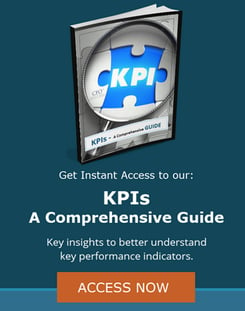
Lenders and investors will always ask for financial statements as part of the application process. When applying for funding, you will be required to provide both historical financial data and projected financial figures. Banks and investors will then analyze where the company has been and where it appears to be going to determine if its trajectory fits within acceptable risk parameters.
Historical Financial Data
The general rule is that a company must supply three to five years of financial information, but that number can vary based on how many years it has been operational. For organizations that have been around for a long time, more may be required to get a broader historical view of the business. Income statements, balance sheets, and cash flow statements should be provided for each year your company has been in business for up to five years.
Income Statement
A company’s income statement is the most important financial statement to provide when applying for funding because it reveals whether your business can generate profits. It also sheds light on whether this profitability is sustainable by evaluating the effect of fixed costs on profits, pricing strategy, and sales volume. The income statement tends to be the most accurate financial statement. While using a cash basis accounting system can affect the clarity of an income statement, it is, nonetheless, a key component for lenders and investors.
However, an income statement does not address the assets and liabilities required to generate a profit. Therefore, it will not be evaluated alone without other supporting financial documents to provide a full picture of your business’s finances
Statement of Cash Flows
The cash flow statement focuses solely on the inflow and outflow of cash, which is a good barometer for lenders and investors to use for evaluating how your business is operating. Investors are especially interested in the statement of cash flows because it explains how the company is using its cash now and in the past. It reveals whether the company is still paying off old debt and whether it has the cash needed to keep doing so, making it another critical piece of the puzzle.
Balance Sheet
A balance sheet provides a look at what a business owns and owes, which is vital to understand if your business is ever unable to repay its loan because selling assets will be required in that situation. Lenders and investors will evaluate the balance sheet in conjunction with the income statement to examine how much of an investment in assets and liabilities is required to sustain the business’s profitability.
Projected Financial Figures
Forecasted financial statements will be required for the next five years. If your company is well established, these can be provided on an annual basis. If it is your company’s first year in business, financial information should be forecasted on a monthly or quarterly basis for the coming year. Projected income statements, balance sheets, cash flow statements, and capital expenditure budgets will all need to be provided. These projections should match your funding requests, and all assumptions should be thoroughly explained to lend additional insight.
Lenders will evaluate balance sheets and income statements using a ratio analysis approach. The ratios creditors use typically include debt-to-equity, debt-to-assets, quick ratio, and current ratio but may include others as well, depending on the banking institution. Some banks will have ratio cut-offs and not lend to applicants with ratios that do not fall within their preferred ranges because of the risk associated with doing so.
As a result, lenders may look more favorably upon funding proposals that already include ratio and trend analyses. Unfortunately, most businesses do not have this information unless they employ a CFO. If your application does not include ratio analysis, you can hire a consulting CFO to assist with your funding proposal.
Due Diligence
Remember, regardless of how healthy an organization’s finances appear to be, there is information that a lender will want to know that does not appear on financial statements. For instance, lenders and investors need to know if an ongoing lawsuit or class action settlement is occurring. Anything that could jeopardize a company’s ability to pay back its loan or stymie future performance is of interest to creditors. For this reason, banks and investors will likely do their due diligence to ensure that the company is clean of any legal trouble. Due diligence can take many forms, including reviewing legal filings, searching news reports, talking to leadership, and interviewing employees. The goal with due diligence is to find out everything that the business is not telling them to protect themselves.
If you need current cash flow information to obtain a loan, use our instant access cash flow calculator to anticipate revenue shifts, plan for COGS changes, evaluate payroll costs, and evaluate the impact of M&As.






